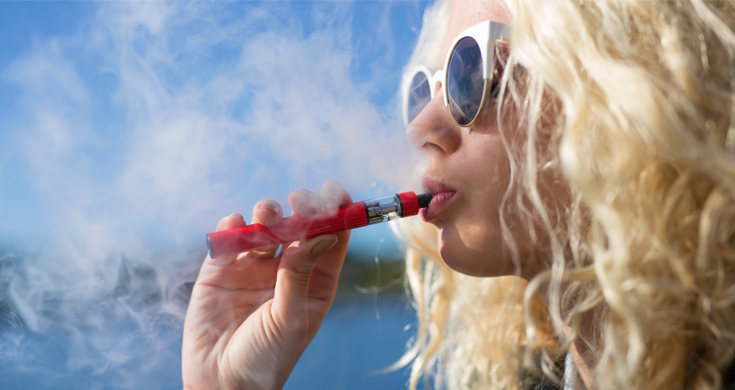For many of today’s parents, the words “Juul” and “vaping” may not mean anything, but for a new generation of teens, these are the new buzzwords of an activity that’s reaching widespread proportions.
Here’s an overview of what vaping is, what it can do, and what you can do to protect your children from this harmful activity.
What is Vaping and Juul?
The term “vaping” refers to inhaling the aerosol (also called vapor) emitted by electronic cigarettes (e-cigarettes), vape pens, or personal vaporizers. A vaping device or electronic cigarette is made up of a mouthpiece, a battery compartment, and a cartridge for the e-liquid, which is a glycol or vegetable glycerin-based liquid filled with nicotine and flavorings. As the battery heats up the liquid, it emits an aerosol vapor that the user inhales as one would inhale cigarette smoke.
A Juul is a brand-name vaping device that closely resembles a flash drive, and can even be charged through a USB port. These trendy devices now account for 33 percent of the e-cigarette market and are especially popular with young adults aged 18–24. The term “juuling” has become a catchword for vaping with a Juul device.
The Dangers of Vaping
Since e-liquid contains no tobacco, manufacturers have touted these e-cigarette products as a healthier alternative to cigarettes; but research is showing that they’re anything but safe. For one thing, many e-liquids still contain nicotine, which is highly addictive. In fact, according to a Truth Initiative study published in April, one Juul cartridge contains about the same amount of nicotine as an entire pack of cigarettes, which means a new generation of teens may become addicted to nicotine through these vape pens.
Even with nicotine-free liquids, however, the dangers have become increasingly evident. Studies show that the basic ingredients of these e-liquids, propylene glycol and polyethylene glycol, can, when heated, produce carcinogenic compounds that are exhaled during vaping, while other studies have shown that propylene glycol can cause asthma.
Likewise, studies have revealed that five different toxins—acrolein, acrylamide, acrylonitrile, crotonaldehyde, and propylene oxide—are present in the urine of teens who vape. These toxins are known or suspected carcinogens. In particular, acrylonitrile, a component of the fruit-flavored vapes popular with today’s teens, has clearly been identified as a human carcinogen. These studies have shown that teens who use vape products have higher levels of cancer-causing chemicals in their bodies than non-smokers do.
Vaping Devices: Their Use in Schools and What’s Being Done About Them
Although minors are prohibited from purchasing Juuls, e-cigarettes, and other vaping devices, a recent report from the CDC shows that 20 percent of high school students say they’ve used a tobacco product—usually e-cigarettes. Toward this end, schools are updating their protocols to ban vaping devices, and are educating teaching staff to recognize the different types popular with teens. A number of school districts are also considering installing vaping detectors in restrooms.
Recently, the U.S. Food and Drug Administration (FDA) and the Federal Trade Commission (FTC) sent warning letters to manufacturers of e-cigarettes regarding their labeling and advertising that might be targeted to kids. “No child should be using any tobacco product, and no tobacco products should be marketed in a way that endangers kids—especially by using imagery that misleads them into thinking the products are things they’d eat or drink,” said FDA Commissioner Scott Gottlieb, M.D.
What to Do if Your Child Is Vaping
When harmful activities such as vaping reach widespread use, it’s all too easy to panic; but the best approach is to calmly talk to your child about vaping. By initiating an honest, open, and calm discussion with your child, you can find out what you need to know about his or her involvement.
From there, you can progress to a discussion about why vaping is just as dangerous as cigarettes. It’s important to remember that a lot of kids are lulled into thinking that vaping is harmless. In fact, the Truth Initiative study found that sixty-three percent of those using Juul were not aware that the product contains nicotine.
By presenting the facts, such as the research results concerning the toxic chemicals involved, you can help persuade your child that there’s not only nothing “cool” about vaping, it’s also proven to be harmful. When presented clearly and in a supportive way, these facts, figures, and images can go a long way toward persuading kids not to pursue an activity that can leave them with debilitating illnesses—and possibly strip years off their lives.




































